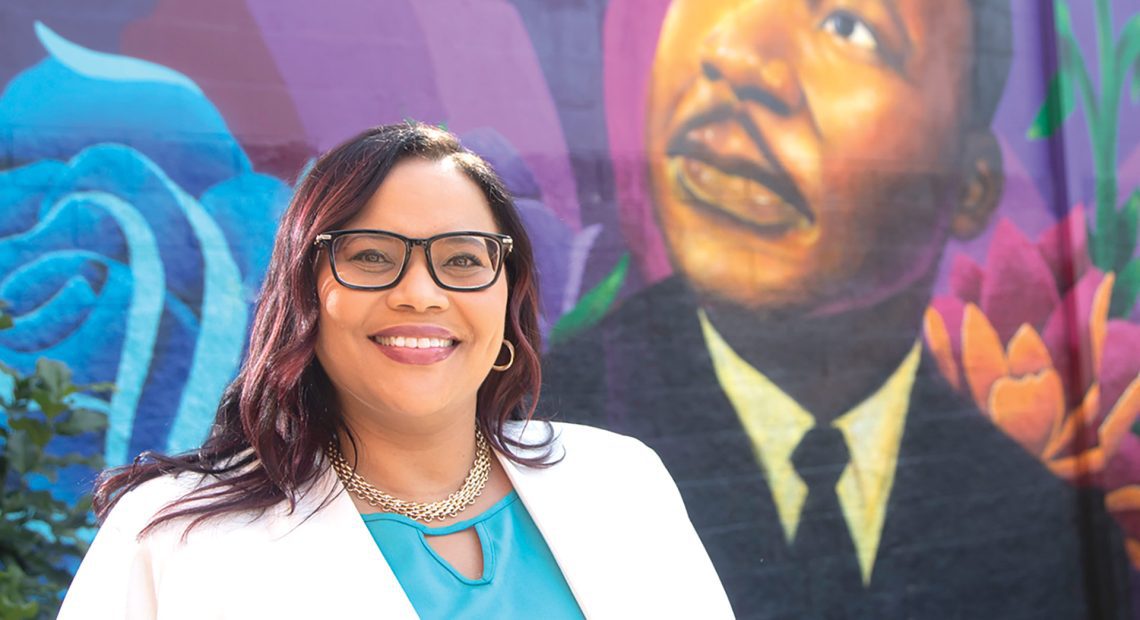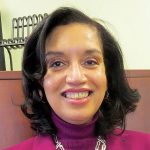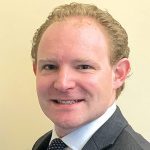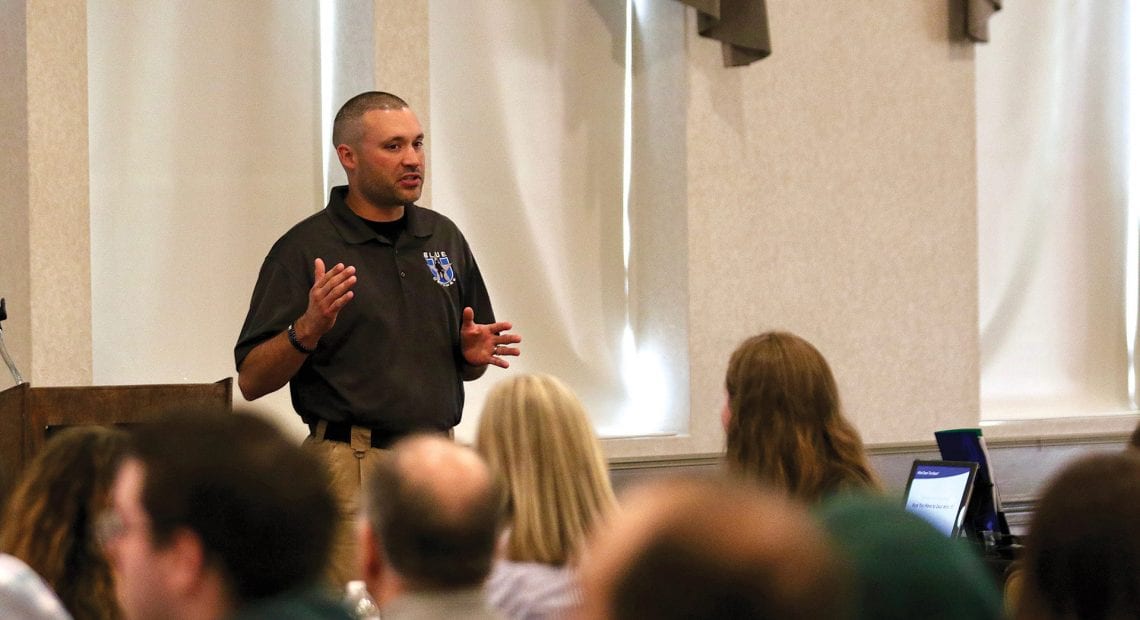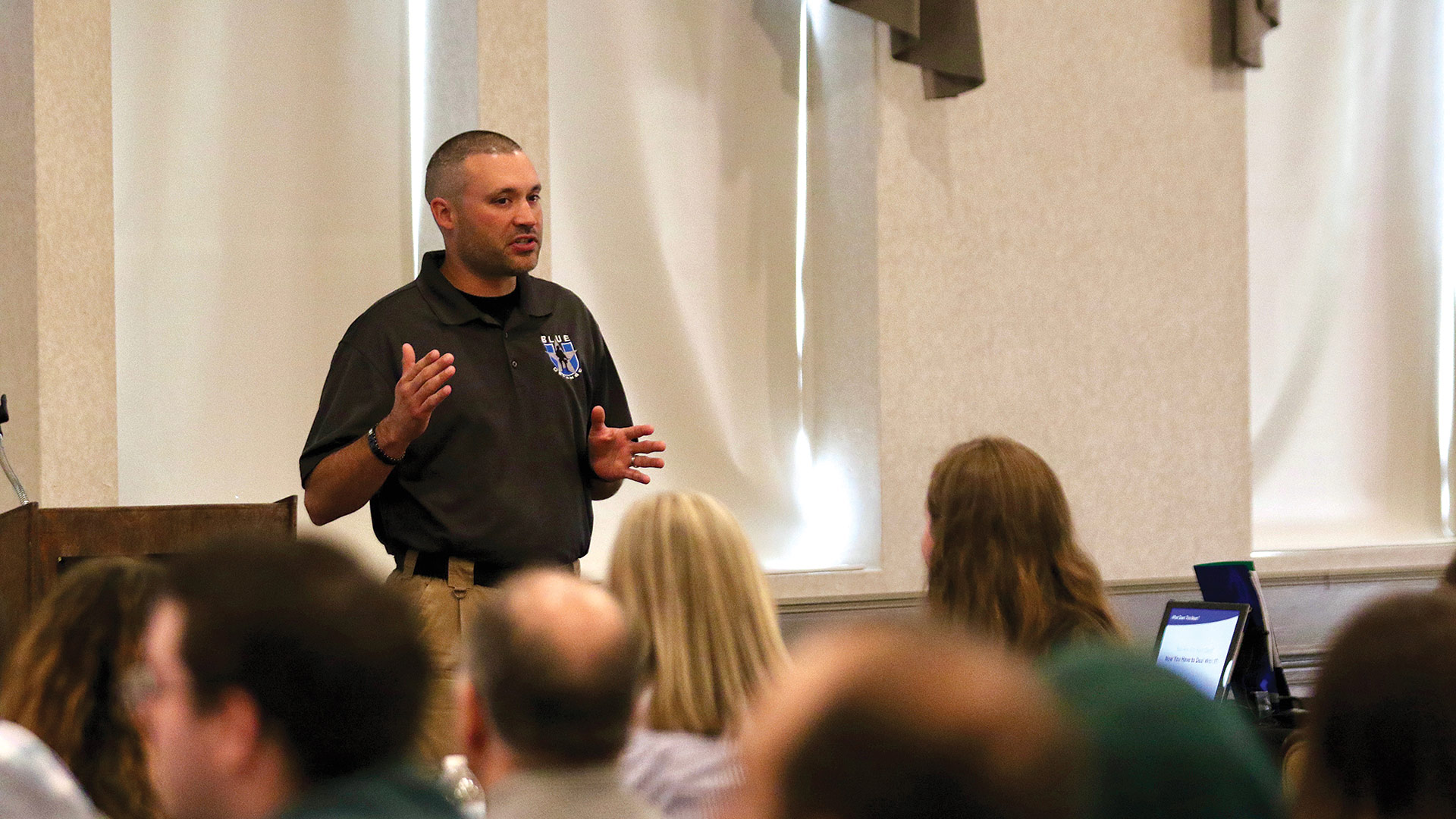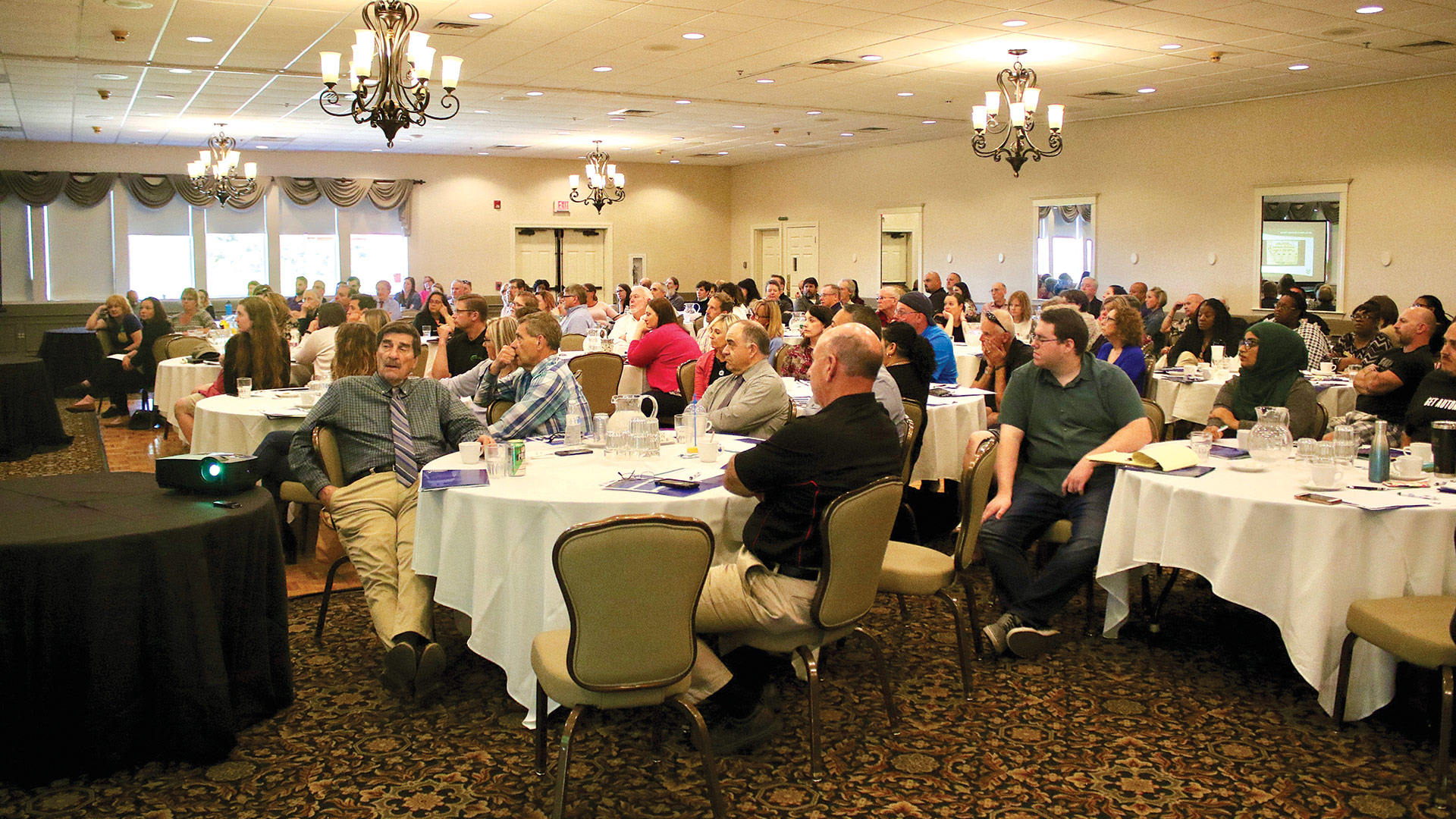More Than a Seminar
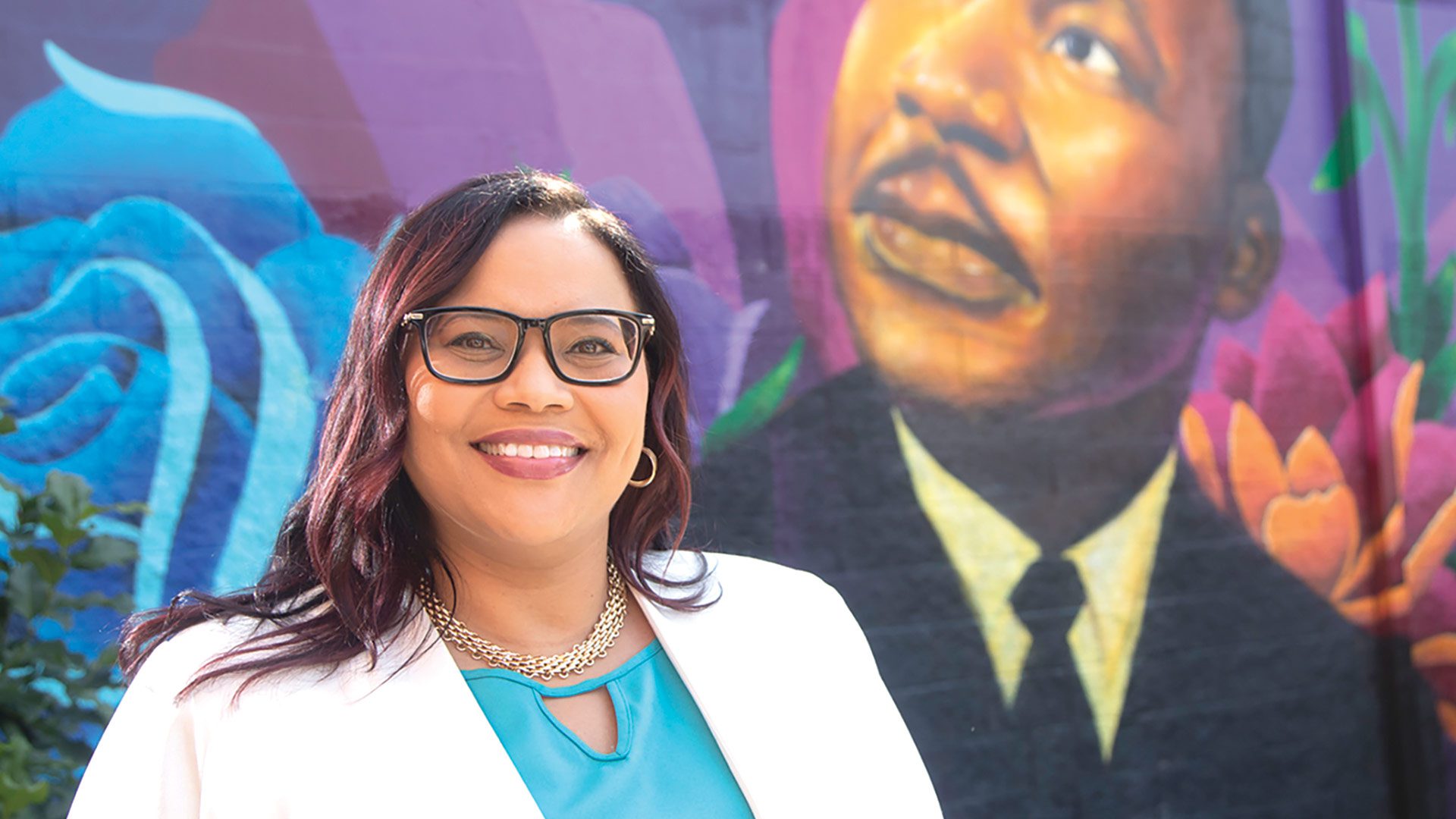
Shannon Rudder says achieving real DEI in a company begins with creating a culture of authenticity and trust.
Shannon Rudder remembers her “bad boss.” And she never wanted to be one.
“What that bad boss did, what stuck out for me, was that everybody had to cater to how he led,” she said, adding that he believed that was how to maintain a bias-free workplace. Unfortunately, that philosophy can be incompatible with an equitable workplace.
“If I’m a single mom, maybe I can meet the deadlines, but I can’t do it in the same exact way as someone who doesn’t have kids, or has kids that are grown, right?” said Rudder, president and CEO of Martin Luther King Jr. Family Services in Springfield. “So in the most rudimentary sense, when you take the -isms and race and all that stuff out of it, that’s equity.”
And it’s a concept many businesses neglect when they talk about diversity, equity, and inclusion (DEI) programs, Rudder explained. They’re focused on a diverse workplace, but neglect to create the sort of culture where everyone is seen for their unique makeup and treated not equally, but equitably.
Colleen Holmes
“We take a whole lot of pride and pleasure in working with folks as the individuals they are. That means that we look at the whole person and not one single aspect of their identity, and that’s what DEI is about.”
She cited a cartoon often used to express the point (see below). It pictures three boys trying to watch a ballgame from behind a fence. The first panel has each standing on a single box; though they’re being treated equally, the shortest boy still can’t see the game. The second panel, by moving those boxes around, demonstrates equity — now everyone can clearly see over the fence.
The barriers are different for each member of an organization, Rudder said, and so are the proverbial ‘boxes’ they might need to stand on to do their jobs effectively. (To take it a step further, the cartoon sometimes includes a third panel, labeled ‘liberation,’ with the fence removed completely.)
“The CEO of a nonprofit is not the same as a president or CEO of a Fortune 500 company, but conceptually, we can’t sit in our positions of power and think we know what everyone’s barriers are,” she added. “I’ve got to like actually talk to people to figure out what the barriers are. So it’s about the relationships.”
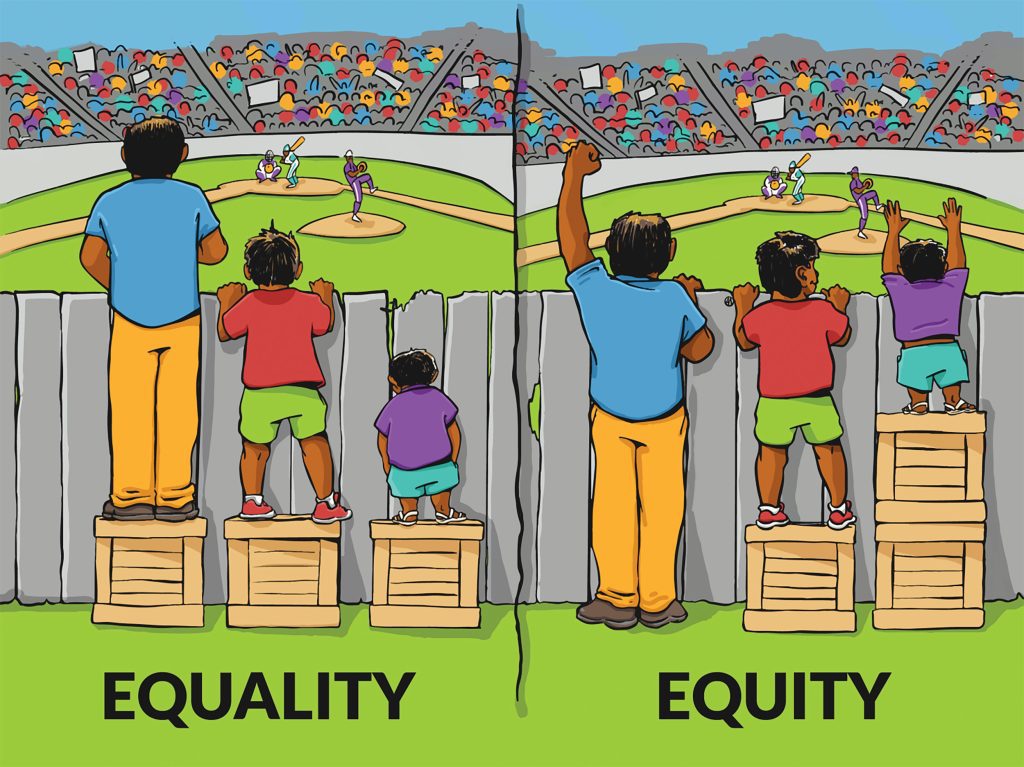
Interaction Institute for Social Change / Artist: Angus Maguire
It’s also about honest discussions about privilege and internalized biases and weaving equity into every corner of the organization — and that’s not something that can be achieved with a one-off professional-development seminar on DEI.
“You’ve got to get to the heart of why there are biases, why folks aren’t being productive working together,” Rudder said. “We’re all socialized very differently. So we need to create environments where folks feel comfortable and they trust each other. You don’t want somebody to feel tokenized; you want to be able to create that authenticity, that trust, so then you can begin to understand what the real barriers are.”
Colleen Holmes understands this concept. As president and CEO of Viability Inc. in Springfield, which provides vocational training, job placement, and other supports for individuals with disabilities, she’s worked with employer partners to help them understand how a workplace can benefit from workers from all backgrounds and all abilities.
“All the services we offer are around folks having the opportunity and support to be able to build their skills and attain things that are important and meaningful to them in their lives,” she told BusinessWest. “Everything we do is very specifically geared toward helping individuals find their pathway to thriving beyond whatever their limits are. And for individuals with disabilities, those limits are considerable.”
Trevor Brice
“Is this person better-qualified? Just give justification for the decision in case you’re challenged down the road.”
But they can be overcome — if an employer is committed to equity.
“We take a whole lot of pride and pleasure in working with folks as the individuals they are. That means that we look at the whole person and not one single aspect of their identity, and that’s what DEI is about,” Holmes explained. “The aspects of our identity are layered and complex, and that’s what makes us interesting people.”
The said the word ‘accommodation’ carries some baggage because people think it’s a one-way street — that the employer has to accommodate the employee, but isn’t going to benefit from that employee beyond checking a DEI box.
“In fact, when employers learn how to think differently in their approaches to getting business objectives met, they have more humanity in their company,” she said, adding that employers who understand this — who are willing to cultivate not only a diverse workforce, but an equitable, inclusive one — have a leg up.
Questions Around Diversity
The ‘diversity’ piece of DEI has been the source of much discussion lately, as employers have grappled with whether efforts to build a racially (and in other ways) diverse workplace will run afoul of federal law, especially after the U.S. Supreme Court struck down affirmative action in college admissions this past June.
“They didn’t directly speak to private employers; it only applies to colleges and universities,” said Trevor Brice, an attorney with the Royal Law Firm in Springfield, adding, however, that there could be ripple effects. “I think the implications of the Harvard and North Carolina ruling go more to reverse-discrimination suits, people in majority groups suing over being given unfavorable treatment in relation to minority groups because of affirmative-action or DEI programs.”
To be clear, he added, hiring and firing employees based on their status in protective classes has never been allowed. “What’s almost inevitable is there are going to be challenges to employers based on these cases now.”
Dan Moriarty
“We have a long way to go with it, but we’re trying to build something. We want to make meaningful progress — not just check a box, but make a difference.”
Mary Jo Kennedy, partner and chair of the Employment Law practice at Bulkley Richardson in Springfield, agreed that the SCOTUS ruling has no immediate impact on the legal standards that govern private employers’ DEI or affirmative-action programs, noting, like Brice, the existing prohibition against making employment decisions solely based on a person’s protected characteristics, like race or gender.
“But there is the potential that we may see more reverse-discrimination cases,” she added, before listing several steps employers can take to promote diversity within the bounds of the law:
• Avoid considering race as a basis for employment decisions or practices in a way that could be seen as granting race-based preferences;
• Review any DEI policies or programs for compliance with federal and state laws;
• Understand that it’s OK to prioritize diversity and inclusion but not OK to use race- or gender-based quotas;
• Broaden the use of the term ‘diversity,’ understanding that it’s more than just race and gender; and
• Review the company website and other public-facing documents and internal DEI materials for compliance with federal and state laws prohibiting discrimination.
Employers can also protect themselves against reverse-discrimination cases by carefully documenting the reasons behind every hiring and promotion decision. In other words, it makes sense to cast a wide net to promote a diverse applicant base, but make sure there’s a business case for each decision, and “document, document, document,” Brice said.
“Why are you making this decision? Is it solely due to race or other protected characteristics? Then it’s probably not going to stand up to a legal challenge. But high GPA, work history, things like that are fine. So, is this person better-qualified? Just give justification for the decision in case you’re challenged down the road.”
Employment-law firms already see plenty of wrongful-termination cases, he added, and there’s a feeling that the June SCOTUS decision will embolden more of them, even though that ruling applies only to higher education. “More needs to be seen. There hasn’t been a legal challenge yet, so there’s no guidance yet.”
Making Meaningful Progress
Monson Savings Bank President Dan Moriarty has been actively been involved in DEI strategy over the past year or so, not only at his own institution, but through his co-leadership of an executive council established by the Massachusetts Bankers Assoc. to promote DEI efforts across member institutions.
“Every individual and every organization is on a different path along the way to being more diverse, equitable, and inclusive in their organization,” he said. “We have a DEI committee here at the bank, and we’re trying to adopt best practices from the Mass Bankers Association for advancing our DEI program.”
That process toward a level playing field begins with understanding the dynamics of DEI and the barriers and biases that hinder it, he noted, adding that he and two other MSB leaders recently attended a seminar at the Healing Racism Institute of Pioneer Valley. “That was phenomenal. Just the awareness and deep understanding was very impactful for me personally and professionally. We all have to do more.”
“Our corporate counterparts — and I get why they do it — focus on diversity because that’s a tangible way to demonstrate, ‘we’ve got X percentage of women, we’ve got X percentage that identify as able-bodied or people of color,’ all those identities. I get why diversity comes first. But for me, it’s really centered on equity.”
Adopting some best practices recommended by Mass Bankers, Monson Savings has created a DEI commitment statement, developed and implemented a DEI program that continues to evolve, provided DEI training to board members and employees, identified and monitored key performance metrics, and conducted periodic self-assessments of the program.
In addition, he said, the bank has reviewed numerous documents, including its strategic plan, along with communications, processes, and facilities, to ensure that potential barriers are identified and removed and that DEI expectations are reflected, while also conducting outreach and expanding the bank’s relationships with key community members and organizations.
“We have a long way to go with it, but we’re trying to build something. We want to make meaningful progress — not just check a box, but make a difference,” Moriarty said. “People want to do the right thing, but they have to educate themselves and really make a concerted effort to be able to make the change. It’s not just acknowledging we need more diversity, equity, and inclusion, but we also have to take actual steps to get us to a better place.”
Viability has seen its employer partners — more than 800 of them nationwide — find that better place.
“Some employers are looking to live a philosophy of the organization around diversity, equity, and inclusion because it’s the right thing to do,” Holmes said. “And there is data out there that shows that, if companies have accessible and welcoming environments for individuals with disabilities, consumers are more likely to shop there. And this is something businesses and employers have taken notice of.
“DEI is really a no-brainer,” she added. “But it does require a cultural change within an organization.”
The Rest of the Story
“Injustice anywhere is a threat to justice everywhere.”
That’s one of Martin Luther King Jr.’s most popular quotes; just about everyone has heard it. But far fewer, Rudder said, know the rest of the quote, the words King said directly after:
“We are caught in an inescapable network of mutuality, tied in a single garment of destiny. Whatever affects one directly, affects all indirectly.”
“That’s the nutshell of how I approach the work,” she added. “Our corporate counterparts — and I get why they do it — focus on diversity because that’s a tangible way to demonstrate, ‘we’ve got X percentage of women, we’ve got X percentage that identify as able-bodied or people of color,’ all those identities. I get why diversity comes first. But for me, it’s really centered on equity.”
Rudder said she practices ‘culture humility,’ which is a commitment to constant self-evaluation by which people not only learn to understand other cultures, but also critically examine their own — and understand the privileges they enjoy.
“If we’re going to aim to be centered in equity, we have to first understand where our privilege is,” she said. “And that goes back to Dr. King’s quote; we are all mutually interconnected. It’s a journey — it’s not just, ‘let’s do this program, and let’s check the boxes.’ We’ve got to weave this into the very fabric of who we are as an organization, as a corporation.”



